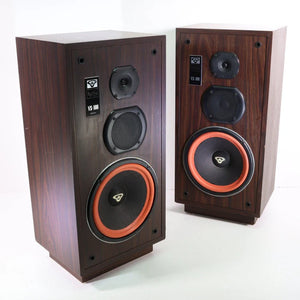We are unable to reply to comments, so please message us directly if you have a specific question regarding products, shipping costs, etc. Our office number is (480) 207-1511. Our email is hello@spencertified.com. You can also message us on Facebook. Commonly asked questions and answers can be found on our FAQs page here.

SHOULD YOU GET A PROJECTOR FOR YOUR HOME THEATER SYSTEM?
TYPES, FEATURES, PROS, AND CONS OF PROJECTORS
Creating a dream home theater system is incredibly fun! You get to choose your speakers, receiver, and…screen? The screen is a vital component of home theater setups - after all, it’s what you watch your movies on - yet it’s often overlooked. You just plug everything into the TV you’ve already got, right?
You certainly can! But if you’re in the market for a new screen specifically designed for a home theater, you can purchase a standard new television…or you can get a projector. It certainly provides a more authentic “theater” experience, but is it really worth it? While not for everyone, projectors have grown in popularity over the last few years, and there are many people who swear by them. So we’re here to break down the types and features of the most common projectors you’ll find on the market and the pros and cons of getting one for your home theater system.
TYPES

First, you should consider the type of projector you need. Not all projectors will fit the needs of all homes, so it's important to know the basics of each one before you shop. These are five common types of projectors that you’ll run into:
- LED: Using light emitting diodes (LEDs) to create images, this projector uses less power and has a great lifespan; however, it does tend to have a lower contrast ratio.
- LCD: This projector uses a liquid-crystal display (LCD) to project pictures with high color accuracy; though they are known as budget projectors, their technology has improved in recent years and offers great picture quality.
- 3LCD: Uses three LCD panels to display different colors, which create bright, vivid images with excellent color range.
- DLP: Using digital light processing (DLP) technology to reflect light using mirrors, these projectors produce incredibly sharp images with quick refresh rates, so you get better motion resolution and smoother action scenes; however, they tend to have comparatively lower contrast ratios and sometimes suffer from a “rainbow effect” where you get flashes of color in your peripheral vision.
- LCOS: a relatively newer projector technology, it uses liquid-crystal on silicon (LCOS) technology to offer high resolutions and contrast ratios with excellent black levels; however, they tend to be more expensive.
FEATURES
As important as it is to know the difference between projector types, don’t let that be the deciding factor! Each individual projector comes with different features and capabilities, so it’s critical to keep an eye on those too as you shop.
Brightness: This determines how far the projector can be from the screen to produce a clear image; measured in lumens, the higher the number of lumens, the brighter the projector will be. Lumens don’t equal better resolution or picture quality, however, so you need control over your room’s lighting if you want a quality theater experience.
If you are going to be using your projector in a lit room, you’ll want at least 2500 lumens; if you can reliably darken the room, you’ll be okay with a projector of least 1000 lumens (a 2000-lumen projector creates a watchable image on a 100-inch screen in a dim room).

Resolution: Most modern projectors are at least XGA (1024 x 768) resolution, and many are WXGA (1280 x 800) for widescreen resolution, so this feature isn’t as important as it may seem. Almost all projectors you’ll find nowadays will have Full HD or 4K resolution, so be sure to consider the resolution limitations of your media source too.
Contrast Ratio: This ratio measures the difference between the brightest and darkest parts of an image, so a higher ratio results in more visible detail in both light and dark areas. For greater depth and dimension in your movie experience, look for a projector with a contrast ratio of at least 1000:1; a 3000:1 projector will have excellent black levels. Though keep in mind that if you plan to use the projector in a well-lit room, a lower contrast ratio may suffice.
Throw Ratio: This ratio determines how wide the image will be when placed at a certain distance from the screen, which makes it one of the most important aspects to pay attention to when looking for a projector. It’s calculated by the distance from the projector lens to the screen divided by the width of the screen. If the distance is 30 feet, and the width is 10 feet, the ratio is 3:1.
A shorter throw ratio is best for smaller rooms because even if you place the projector close to the screen, you’ll get a clear image. A longer throw ratio is better for larger spaces because if you mount your projector or place it farther from the screen, you’ll still get a large, clear image.

Keystone Correction: This refers to correcting the distortion of the image when the lens is not properly aligned with the screen. It lets you adjust the projected picture’s shape, which is useful if you move to a room of different size or you change the screen size.
Most home theater projectors offer horizontal and vertical keystone correction. If you’re planning on mounting your projector or placing it in a hard-to-reach spot, look for one that has automatic keystone correction; otherwise, one with manual keystone correction is just fine and will save you money.
Lens Shift: This allows you to adjust the projected image’s height (independently of the projector’s height), giving you more placement options. Lens shift helps if you’re unable to properly align the projector to the screen; with it, you can reposition the image with zero quality loss.
PROS

Now let’s look at some pros of getting a home theater projector! One of the main reasons people choose a projector over a standard television is because of the freedom in screen size. With projectors, you get to project your movie onto a massive screen. If you want a screen larger than 70 inches, it’s probably best to go with a projector; huge images of 125-, 150-, and 200-inches aren’t out of the question either. Projectors can even operate with any surface, whether it be a specially-made screen or a white wall. With a projector, you’ll also get a more authentic-feeling cinema experience that the whole family will enjoy.
And unlike television, projectors reflect light, not emit it, so you won’t be staring at emitted light for the full duration of your movie; this reduces eye strain. Larger screens are also easier on the eyes since everything is bigger and easier to see.
Another pro is their compact size: they are easy to store, are lightweight, and can be transported from room to room. This makes it easy to take them outside for an outdoor screening or carry them to a friend’s house for a movie night.
CONS

On the other side of the coin, you have the cons and limitations. Projectors are sensitive to ambient light, so unless you can reliably block out the light in your home theater room, the image contrast of a projector won’t be as good as on a television.
Another con is that while you can certainly project images onto any surface, you’ll be able to see that surface through the image. If you project it directly onto the wall, you’ll probably see that wall’s texture. And projector screens can get expensive, especially for larger sizes and ones that let you hide the screen when not in use.
Projectors also don’t last forever. The lamps typically burn out after a couple years of regular use, so they need to be replaced occasionally. Depending on the type of projector you get, the bulbs will be pretty expensive (sometimes costing a couple hundred dollars), so check into bulb replacements before you commit to a projector.
SUMMARY
A home theater projector is a great way to spice up your movie-viewing experience! It makes you truly feel like you’re at the cinema, and it creates fun and easy family movie nights. But they’re not for everyone. So it’s important to know the different types and features available so you can decide whether getting a projector is right for you. We hope this guide helped!
Thanks for reading! Have a great day.



Leave a comment